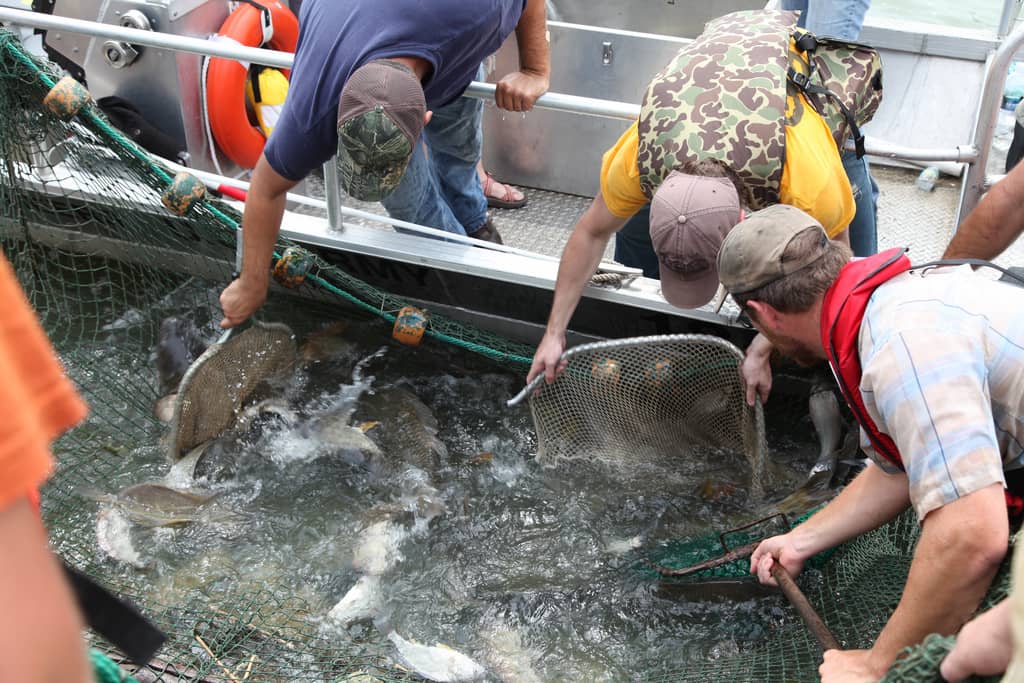False Alarm: Eggs Found in the Upper Mississippi River Not from Asian Carp
OutdoorHub Reporters 06.02.14

In March, the US Geological Survey (USGS) announced that Asian carp eggs were discovered as far north as Lynxville, Wisconsin. The discovery would have marked the furthest expansion of the invasive fish, more than 250 miles from the closest documented population of Asian carp. For states still preparing preventative measures—like Minnesota and Wisconsin—it meant that time was running out. On May 22, the USGS stated that they had made a mistake: extensive genetic analysis proved that the eggs instead belonged to a similar, but native North American fish species.
“Detailed visual analysis of the eggs’ size and shape earlier this year indicated that they were consistent with the eggs of Asian carp species and led scientists to believe that invasive carp may have successfully spawned in this northern portion of the Upper Mississippi,” the USGS stated in a press release. “Given the seriousness of the Asian carp spread northward, USGS scientists alerted partners and the general public about that potential in March and decided to pursue genetic testing to confirm the visual findings.”
Researchers were fooled during initial visual identification because native carp in the Midwest generally lay much smaller eggs than Asian carp. Of the the 65 eggs collected in the summer of 2013, only one had been confirmed to be a non-native grass carp. None are currently believed to be bighead or silver carp, the most destructive Asian carp species.
“What we have learned from this research is that non-Asian carp cyprinid eggs in the northern portions of the Upper Mississippi can closely resemble Asian carp eggs in size and shape,” said Leon Carl, USGS Midwest Region Director. “These findings underscore the importance of using genetic testing to confirm the results of visual identification.”
The new announcement comes as a relief to wildlife managers in the region, especially those in Wisconsin. With this latest revelation, the state’s portion of the Mississippi River can once again be labelled carp-free—for now.
“It gives us breathing space,” Carl told The Milwaukee Sentinel.
The March announcement had left researchers in Minnesota scrambling. Lynxville sits about 150 miles from Genoa’s Lock and Dam Number 8 on the Wisconsin border with Minnesota. Researchers had planned to install custom speakers there to deter the spread of Asian carp, but the speakers are only useful if they are in-place before the carp arrive.
“Just a few months ago, it was announced, somewhat surprisingly, that their eggs were just found south of the Minnesota border,” said Peter Sorenson, a University of Minnesota professor leading the initiative. “It became evident [the] game plan had to shift.”
Thankfully, researchers will now have a little more time to get their speakers into place.
The Upper Mississippi is not the only place where a watchful eye is kept on the fish’s progress however. Earlier this year the US Army Corps of Engineers released a report that included an $18 billion plan to keep Asian carp out of the Great Lakes. While expensive, many lawmakers have spoken out in support of the plan. If left unchecked, Asian carp can readily oust native species of fish and damage beneficial plant life.
“If you don’t do something, it’s like sitting on the train tracks and watching the train come,” Sorenson said.

